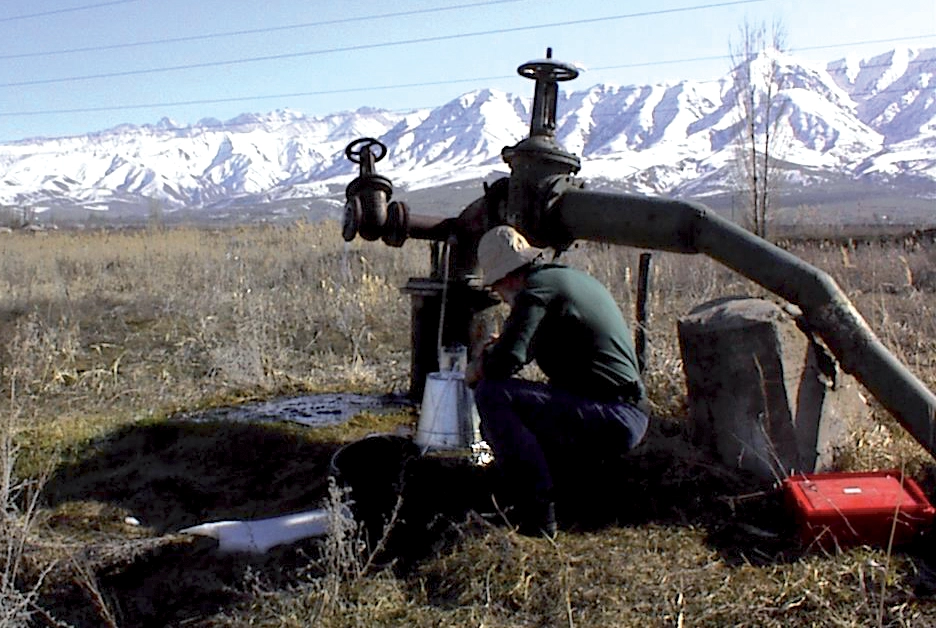BGS is the UK’s leading organisation for groundwater dating and tracing. We use a wide range of environmental agents for this work including chlorofluorocarbons (CFCs), sulfur hexafluoride (SF6), tritium (3H), radiocarbon (14C) and stable isotopes. We also frequently use stable isotopes of water for understanding sources of groundwater recharge and recharge processes such as surface/groundwater interactions in catchments.

Groundwater sampling in Bishkek, Kyrgyzstan, where CFCs and SF6 have been used by BGS to determine water movement beneath the city. BGS © UKRI.
Some of our work includes:
- characterising the isotopic fingerprint of phosphorus in drinking water
- investigating residence-time distribution in Chalk catchments
- using age indicators to aid water supply operational planning
- assessing the extent of induced leakage to urban aquifers
- identifying basin-scale groundwater quality trends
- determining the fate of nitrogen in moorland catchments
- evaluating the effects of large-scale quarrying on groundwater movement
- delineating the occurrence of pristine ice-age groundwaters in the UK
Why is the age of groundwater important?
There are various reasons why it can be important to know the age of groundwater in a particular aquifer. For example:
- does age validate the hydrogeological concept?
- is the water a mixture of different ages?
- is the water sustainable or being ‘mined’?
- did the water recharge in pre-industrial times?
- was the water recharged during the ice age, that is, under different climatic conditions?
Which constituents can be used to date groundwater?
Some groundwater dating agents, for example 14C, are produced naturally in the environment and are suitable for dating waters many thousands of years old. Others, such as CFCs, are the result of human inputs to the environment and are best suited to dating young groundwaters. In some cases, such anthropogenic compounds can also be used to trace groundwater flowpaths.

